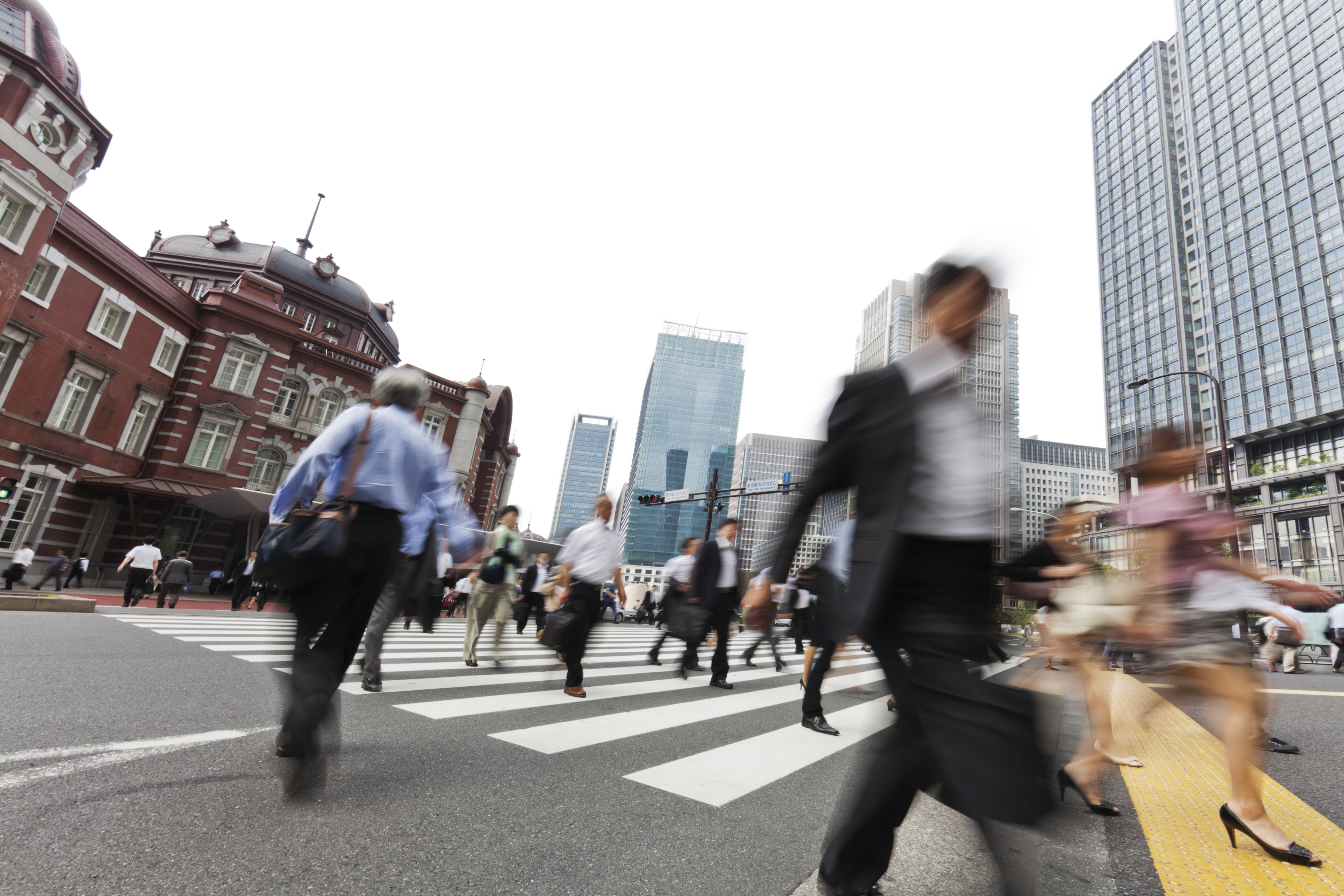Cities. They’re the places where most Americans live, work and play, but skeptics say they aren’t the “real America.” They drive economic growth, but rarely reap the full benefits of what they generate. Cities are places of opportunity and innovation but saddled with neglectful, if not downright harmful policies. Thomas Jefferson called cities “pestilential to the morals, the health, and the liberties of man.” Donald Trump, a lifelong New Yorker, referred to Baltimore as a “disgusting, rat and rodent-infested mess,” Atlanta as “in horrible shape and falling apart” and inner cities across the country as “burning and crime infested.”
Why all the hate?
In his new book from Columbia University Press, Unequal Cities: Overcoming Anti-Urban Bias to Reduce Inequality in the United States,” economist Richard McGahey explores the deep roots of America’s anti-city bias and points to persistent federal and state policies that keep our cities from reaching their full potential. McGahey’s book offers a pushback against market-oriented urban economic analysis that has exacerbated inequality so profoundly that cities like Miami and New York are now as unequal – or more so – than countries like Brazil and Zambia. He points to problems in the way we talk about cities and illuminates how their political, economic, and racial challenges get obscured.
The fate of U.S. cities matters to everyone, argues McGahey, no matter where they live or how they vote. In the following interview, he discusses his book with the Institute for New Economic Thinking, explaining why if we want a prosperous future, we need to start thinking differently about cities.
Lynn Parramore: Cities, as you point out, are incubators of innovation and economic growth engines. Yet in America, they are often viewed with hostility dating back to the country’s founding, when Jefferson likened them to sores on the body. Today, we hear that cities don’t represent the “real America.” Why the antipathy and how did it get baked into the political system?
Rick McGahey: When the U.S. was founded it was a rural country, and of course, a lot of that rural life, especially in the South, was slaveholding agriculture. Something like 6% of the population was urban at the time of the American Revolution compared to around 30% or more in Britain. We were set up that way. The founding documents were hostile to cities. It was a surprising thing to me how much state governments hurt cities as well. The hostility towards cities gets built into the electoral college. There’s this permanent disadvantage to cities structurally even as they become more important economically. That’s tied to the ideology. You mentioned Jefferson. During the yellow fever epidemic in Philadelphia, Jefferson said something like, well, it might have some benefits if it kills off some of the urban residents!
LP: How have American cities developed in ways that are distinct from say, London or Paris?
RM: You still have inequality in those cities, so there’s something about our current capitalist system that produces inequality throughout the economy, especially in cities. Some of these economic forces are shared, but I think it’s heightened in the United States by political formations which are deeply tied to structural racism in our metropolitan areas. London is one government, basically, and it’s double the size, in terms of square miles, of New York City. There are lots of small subsidiary governments within it that deliver services, but it’s one big government. New York City alone has lots of different governing aspects and the metro region has over 700 separate municipal governments. Three states involved. It’s really fragmented.
All this really makes it worse for us. The American form is to have a core city in a metropolitan area surrounded by often hostile, often mostly white suburbs, and that really distorts the returns from the economic engine that the city creates.
LP: How does this type of fragmented development impact the kinds of services and resources available to city dwellers? Visitors from Europe are often struck, for example, by the poor state of mass transit in American cities.
RM: There are always some externalities, as economists put it, that get generated by growth. What happens in American cities is that those are particularly concentrated in the core city at the center of the metropolitan area. So there’s this very unequal sharing. You mentioned mass transit. Or you can think about schools, financed mostly by local property taxes. The wealthier suburbs don’t share these resources with the city. Pollution tends to be concentrated in the city, which also has more poor residents and more non-white residents. These factors all build on themselves and help regenerate the inequality that is initially produced.
LP: How does urban inequality manifest in a wealthier city like San Francisco versus a poorer one like Detroit?
RM: If you take a conventional economist’s measures of inequality, wealthier cities will sometimes do worse with something like a Gini coefficient compared to a city like Detroit where there’s just not that much wealth or it has all gone to the suburbs or out of the region altogether. Inequality in terms of housing issues is easily visible in wealthy cities – a real exacerbation of housing prices. Affluent people will get enclaves or pockets within the core city in places like San Francisco, New York, and to some extent Los Angeles. That, I think, creates more overt conflict internally within the core city in terms of politics. Most residents can’t access those resources that have gone to the suburbs.
LP: Your book is critical of how mainstream economic analysis deals with urban inequality. What does it miss in your view?
RM: Mainstream economics treats the cities like it treats its idealized companies, as if they’re all competitive. There’s a competition going on among them, and it’s a fair one. Firms compete on prices while cities compete on taxes and regulations. This will all level itself out and converge to equilibrium. The problem is, it doesn’t. As with many things about mainstream economics, it doesn’t work. It doesn’t describe reality very well.
Mainstream urban economic analysis really misses four big things. One is the importance of industrial change. I’ve got three case studies in the book – New York, Detroit, and Los Angeles. They’ve all seen wrenching structural changes. In New York, it’s the loss of the unionized garment industry and its replacement with finance. In Detroit, it’s change in the automotive sector. In Los Angeles, it’s the loss of the aerospace sector and a wave of migrant workers who come to work in low-wage manufacturing. Mainstream economics doesn’t deal well with industrial structural change.
It also misses the federal policy effect on cities, which is well-known but not factored into their analysis very much. The third issue is the states’ hostility to cities and state control of cities in the United States. A lot of mainstream economists will talk interchangeably about metropolitan areas and cities and use data from metropolitan areas to talk about cities. So they miss this entire inequality built into the structure of the region and the suburbs. The fourth thing that they miss is structural racism. This is not a race-neutral structure that we have in cities and metropolitan areas. It’s very highly charged by race. There were deliberate policy decisions creating racial disparities, particularly after WWII.
LP: You note that successful urban economies require investment in public goods. What is an area of urban underinvestment that you think is particularly critical right now?
RM: There are so many of them! I would probably point to the education system. There are dollars in the city systems but they have so many more needs in terms of the folks they’re dealing with. They’re assimilating new immigrants and preparing their buildings and infrastructure. The inequality between urban school systems and suburban school systems is so glaring and it’s tied, again, to structural problems. The Supreme Court, in the 1970s, in a 5 to 4 decision [Milliken v. Bradley], said you couldn’t bus students out of the core city into wealthier suburban districts. Also, the central city couldn’t access the property tax wealth that paid for those better schools in the suburbs. So education is probably the one I’d focus on. Transportation is a close second.
LP: You note that COVID-19 fueled inequality while increasing economic pressures on cities, causing a wave of speculation that large American cities like New York are “dead.” In the case of NYC, the 1970s saw great economic suffering, with businesses moving to the suburbs, population losses, etc. Are things different this time or can a city like New York, beset with problems like empty office space, dependence on finance, and continuing inequality, prosper in the future?
RM: Things were much worse in the seventies. That doesn’t excuse the difficulties that they’re having now. Look at the working-from-home phenomenon. It’s a big problem for cities like New York or especially San Francisco that have depended on these full offices in downtown areas. Most of the moves people have made are within the metropolitan area. You see a lot of headlines about people moving to Florida and so on, but most of the moves are just people relocating within the metro area. Again, this configuration where the suburbs are separate governments pulls the tax revenue out of the city. This has also really hurt low-wage workers, the service workers — those who work in building services, janitorial services, food delivery, and cleaning services. They’ve been the hardest hit by this change. I think some of the offices can be repurposed for housing. They’re not valueless. So I think it’s a big challenge and it’s serious, but it’s not the structural challenge that New York faced in the seventies and eighties.
It’s not odd that people are moving out of cities. In America, people often move to suburban places when they get older and form households to raise children because the schools are better, and also we subsidize the housing, at least historically, for whites, though that’s gotten a little better. One of the things that aren’t even talked about, though, is the loss of immigration that has occurred in cities like San Francisco and Los Angeles. First with Trump-era policies, and then with Covid, we have this radical drop in new migrants that has hit. New York has always been a place that thrives on new immigrants from overseas, and in the 1920s from the South with the Black migration. If we would restore immigration it would help. It wouldn’t fully offset the moves that people are making out of the core city, but it would help a lot.
LP: You observe that America’s polarized electoral results reflect the economic divide between urban and rural areas. Are Americans in urban and rural areas really as polarized as they’re made out to be? I’m now a New Yorker but raised in North Carolina, and I wonder if people are really as different as the media and politicians tell us.
RM: Not on economics they’re not. A lot of rural areas do not benefit from this rural/urban divide. There are a lot of poor people in rural areas whose politics are dominated by elites. Their wages are bad. Their jobs are insecure and moving. So I think economically there’s a lot that is similar to what urban residents experience. The culture wars are used to divert or distract from those issues. North Carolina is a great example of this – the state pioneered the anti-trans bathroom bill, and buried in that bathroom bill was also a prohibition on any city in the state raising its minimum wage. Economic policies that worked negatively against cities were smuggled in at the same time this culture war issue was stirred up. It really restricts cities from taking more progressive economic steps.
LP: And the problem of low wages, as you mention, plagues rural areas, too. So it sounds like there’s plenty of common ground to be found if you can get past the hot-button culture issues.
RM: I think so. If you look at the way states’ budgets are allocated, money goes to rural areas but it’s captured by large corporations even more so than in cities. Federal agricultural subsidies don’t benefit most rural residents. States give huge amounts of money to companies to locate in cities and metropolitan areas but they don’t prop up rural areas to the same extent. I think some political actors have gotten very good at whipping up these resentments and pointing to this unevenness. And progressives have done a bad job of pointing to the common ground and finding common roots, which I think there are a lot of economically, certainly on trade policy, labor rights, and minimum wages. There’s really a lot of shared interest.
LP: Do you see any proposals that would bridge economic divides that exist both in cities and rural areas?
RM: The most favorable case I look at in the book is Los Angeles. It’s not a Nirvana – there aren’t any Nirvanas out there. But what LA was able to do, faced with economic structural change in a progressive-led movement that had a lot of union support, was to bring together three groups that usually don’t work together very well. One group was unions and private economic developers. The second was communities of color that wanted better treatment and jobs. The third was environmentalists who are often seen as opposing development.
LA, through constant negotiation, discussion, and inclusion of different groups, developed a political movement that was able to move all three of those groups forward. One example is the LA public transit in 2008. In the middle of the financial crisis and the Great Recession, LA voted to raise its sales tax to build the Metro system and it takes a 2/3 vote to pass a tax in California because of Proposition 13. In this case, everybody got something they wanted. Unions got unionized jobs on the Metro, but in return for that, they had to bring in a lot more minority union members than they were used to doing. The environmentalists got some moves to try and reduce LA’s dominant car culture. You’ve seen that coalition hold together on other issues of progressive economic development. So that’s my hopeful story.
LP: Why is the fate of U.S. cities critical to all Americans?
RM: It’s the economy. I think mainstream economics is right about innovation coming from cities. Innovation and growth come from bringing different ideas together. It’s not just firms. It’s diversity. It’s having different types of people in the same place. Interestingly, Ed Glaeser, a very conservative mainstream economist, looks to Jane Jacobs, the great urbanist, on this issue of innovation.
You see what cities can do not just in economics, but in culture. A place like New Orleans gets freed slaves with their traditions, Afro-Caribbean music, brass bands which came from German immigrants, and [composer and band conductor) John Philip Sousa. Stir all that up and you get jazz. That’s what cities do for you.
We’ll see if working from home can make it go all remote. I’m skeptical about that. I still think innovation is associated with metropolitan and city forms. That’s why it’s critical for the entire economy. The other thing is that cities, for all their inequality problems, are places where people have done better, all the way back to medieval times. Cities made you free, meaning that when a serf moved into a city, if they could hide out long enough, they could be free of their feudal obligations. We have inequality and sexism and racism in the whole society, but cities tend to be more equal and the political forces that favor equality get together with each other there.






